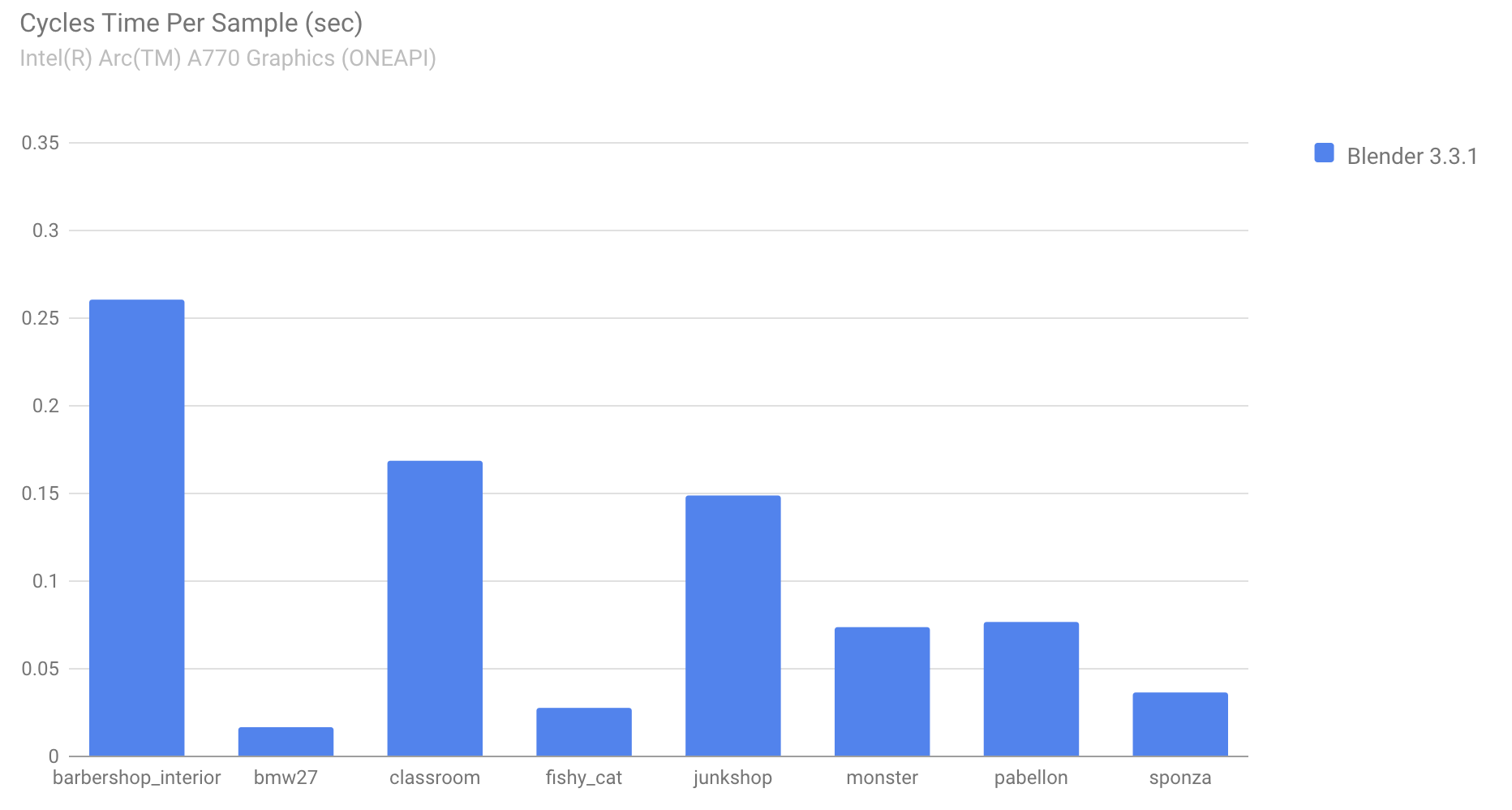Render & Cycles¶
GPU Rendering¶
Intel¶
Support for rendering on the latest Intel GPUs has been added using oneAPI. (a02992f131)
This requires an Intel® Arc™ GPU or Intel Data Center GPU. The implementation is primarily focused on this architecture and future Intel GPUs.
- Supported on Windows with driver version 101.3430 or newer. Some stability issues exists, which will be addressed in future Intel driver updates.
- Supported on Linux with driver version 22.26.23904 or newer.
It is recommended to use Intel Arc Beta drivers.

Going forward we can expect more great things from Intel’s Blender community collaborations. Development is underway to add Intel® Embree Ray Tracing GPU hardware acceleration support and Intel® Open Image Denoise AI GPU acceleration in Cycles for Intel GPUs.
AMD¶
AMD GPU Rendering for Vega generation graphics cards has been enabled, on Windows and Linux. Both discrete GPUs and APUs are supported. (abfa097)
This includes GPUs such as Radeon VII, Radeon RX Vega Series and Radeon Pro WX 9100.
Apple¶
Metal GPU rendering on Apple Silicon received optimizations for memory access locality and intersection kernels. (4b1d315, da4ef05)
Changes¶
- OpenVDB volumes are now rendered with half float instead of full float precision by default. This significantly reduces memory usage. The Volume datablock render settings has a new setting to choose half float, full float or variable precision encoding. (a8c81ff)
- A new Filmic sRGB colorspace was added for images. This may be used for compositing background plates into a render that uses a Filmic view transform, without changing the look of the background plate. Using Filmic sRGB will convert 0..1 range colors into HDR colors in the scene linear color space. (2b80bfe, 33f5e8f)
- Camera depth of field now supports armature bones as target. (2e70d5c)
- OptiX denoiser update performance when rendering with multiple GPUs was improved. (79787bf8e1)